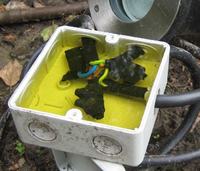Miwhoo wrote:
I suggest removing the existing resin from the can, replacing the can itself, and then refill, this time following the manufacturer's recommendations as to the proportions.
Dude, I think you're absolutely right, it's probably the result of the wrong proportion.
Please tell me - can I close the lid right after pouring it in the right proportions and does it have any effect when it will be in the open air and it will rain ..
Regards and thanks for your valuable suggestions.
The sentence starts with a capital letter. The letter "ę" is in the Polish alphabet and should be used. Please correct the spelling of the posts. [retro food] Added after 36 [minutes]: Darom wrote: Hello
I don't really see what connectors my friend used. The connection is not removable - I would suggest using connections with high durability and low resistance, e.g. a screwed connection.
-DAREK-
The connection is made on one part of the ankle screwed with two screws. I find it quite strong and precise.
And the connection under the lamps could not be done, because there was not so much space in the lamps. In addition, 3 cores of wires would not enter the cube.




